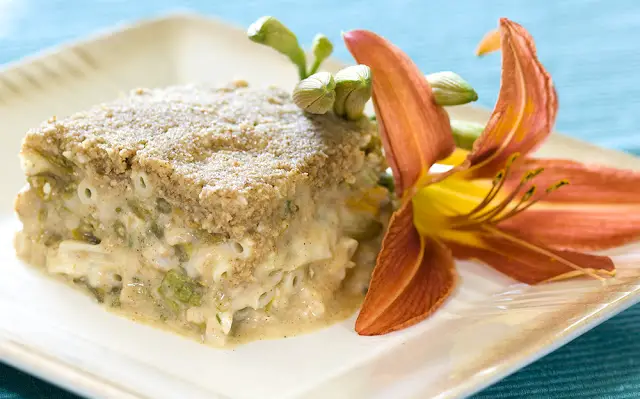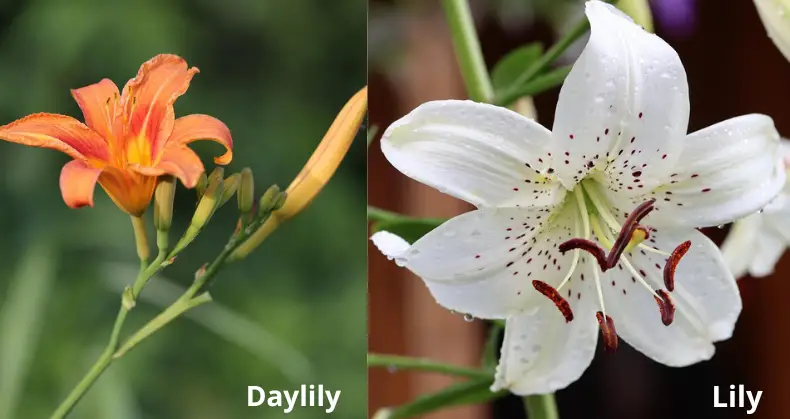The orange daylily (Hemerocallis fulva) is an edible, low-maintenance, herbaceous perennial plant native to Europe and southwestern Asia. It is listed as an invasive species in North America and Australia. It can be cooked in many ways and is often used as garnish.
Orange Daylily: Plant Profile
The plant can grow up to 6 feet tall, with a flower that reaches 4 inches in diameter. This plant grows better in full sun and well-drained soil with organic matter.
Flowers don’t last for longer than a day; hence its common name, daylily or sometimes ditch lily, because it is found on roadsides or ditches.

Can You Eat Orange Daylily?
Orange daylilies are edible and a good source of vitamins, minerals, and protein. They also have a high amount of fiber, which helps keep you feeling full for longer after eating them.
What Are You Foraging For Right Now?
We're thrilled to hear your ideas. What would you like to submit today? Feel free to share your thoughts and experiences with us.
They are rich in vitamins A and C, vital for good health. Orange daylilies also contain chemicals called flavonoids that give them distinctive flavor and aroma. The component also has antioxidant properties that may help protect against cancer and heart disease.
Daylilies have a wonderful flavor, making them great for garnishing cakes and pies. For example, try sprinkling orange flower petals over cheesecake or carrot cake.
Their leaves can also be used to make a delicious green tea or dried and ground into a powder for cooking.

Are Orange Daylilies Bad For Pets?
When you have pets, especially cats, you need to be careful as the plant is poisonous to cats. Cats consuming any part of this plant may experience vomiting, diarrhea, and lethargy.
Orange daylilies are not toxic to dogs. However, It is important to note that if ingested in large amounts, it can cause vomiting and diarrhea in dogs as well.
How to Forage & Cook Orange Daylilies
1. Harvest the shoots in early spring
Harvest the shoots immediately in early spring, after they begin sprouting and are still tender. Since this plant regenerates from its roots, you can slice it above the soil.
Then, chop the shoots and stir-fry them or use them in pasta recipes.
2. Dig up the tubers in the fall
You can dig the tubers in the late fall before the flowers start to bloom, scrub and cook them. Boil them for around 20 minutes and serve.
Snipping a bit of the tuber does not affect the plant as the remaining parts will eventually regrow.
3. Pluck the blooming flowers in early and mid-summer
Orange daylilies are available in early and mid summers and are best plucked when they are still green.
They are also good in pickles. Use the flowers to prepare delicious salads or broth.
Daylily Vs. Lily

Daylilies and lilies (Lilium) are both lilies but from different families. They have various differences, which include:
- Size: The orange daylily grows up to six feet tall, while the common garden lily can reach up to 3 feet tall.
- Flowers: Daylilies have bigger flowers than common garden lilies. Garden lilies have smaller flowers with six petals arranged in a star shape around a center flower disc. However, when you look at daylilies, they have six larger layered petals.
- Leaves: Liliums have smaller leaves than the daylilies.
- Roots: The daylilies have a tuberous root system that joins their crown, whereas Lilium have bulb roots, and they grow upwards in one stem; some also have stem roots and basal. Their bulbs are classified as concentric or stoloniferous. When you want to plant Lilium, you divide it by scaling, and for daylilies, you divide by cutting through the crown between its leaves and roots.
| Plant | Daylily | Lily |
| Size | up to 6 feet | up to 3 feet |
| Flowers | nonlayered petals | layered petals |
| Flower life span | 1 day | 5-7 days |
| Leaves | up entire stem | leaves at soil line |
| Roots | tuberous roots | bulb roots |
Orange Daylily Vs. Tiger Lily

Before foraging for the daylily, you should know the difference between this plant and a tiger lily.
The tiger lily has the same color on the petal but with black spots. Tiger lilies are also edible but poisonous to cats.
Tiger lilies pertain to the Liliaceae family, while the orange daylilies are from the Asphodelaceae family.
Ana has always been interested in all things nature and flora. With her expertise in home gardening and interest in foraging, she has been spending her weekends and free time looking for edible native plants, flowers, and fungi. One of her many hobbies includes testing new savory and sweet recipes, juices or teas made from freshly picked plants, wild fruits, or mushrooms.

